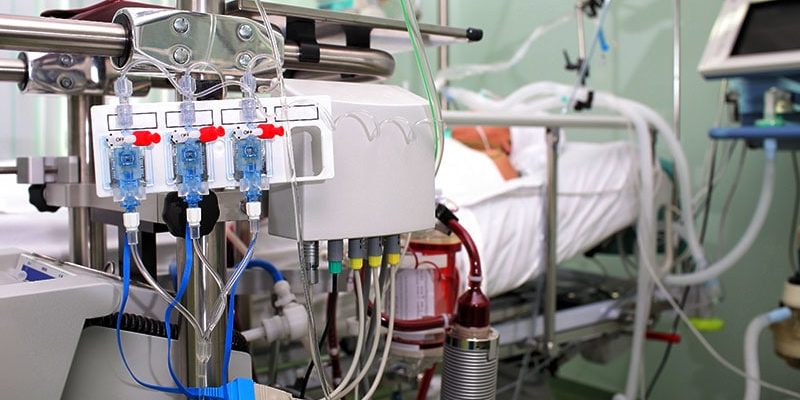Hospitalized patients have increased risk for transfer to the intensive care unit (ICU) if other patients on the same ward were transferred to the ICU or died during the previous six hours, data suggest.
In a retrospective cohort study that examined more than 100,000 hospitalizations, patients were 39% more likely to have a critical illness event (that is, death or ICU transfer) after they had been exposed to one such previous event.

Dr Amol Verma
The phenomenon “could have several explanations, including increased recognition of critical illness, or even fluctuations in ward or ICU capacity,” senior author Amol A. Verma, MD, MPhil, assistant professor of general internal medicine at St. Michael’s Hospital, University of Toronto, Canada, told Medscape Medical News. “We were struck by the finding and surprised by it and were left with more questions than answers.”
The findings were published online July 10 in JAMA Internal Medicine.
Clinical Deterioration Common

Dr Samik Doshi
“Clinical deterioration of hospitalized patients is a common event, and it is important to understand why it occurs,” lead author Samik Doshi, MD, an internal medicine specialist at St. Michael’s hospital, told Medscape. “We were intrigued by a study that came out of Chicago that showed that clinical deterioration on medical wards seems to cluster. We wanted to see if this phenomenon was occurring in our centers and begin to understand why.”
The researchers analyzed data from the General Medicine Inpatient Initiative (GEMINI), a hospital data-sharing network in Ontario, to study whether critical illness events are associated with increased risk for subsequent critical illness events.
The participating hospitals included St. Michael’s Hospital, Toronto General, Mount Sinai, Toronto Western, and Sunnybrook. All hospitals are teaching hospitals affiliated with the University of Toronto and have on-site intensivist-led ICUs and ICU rapid response teams for deteriorating patients on the ward. Nurse-to-patient ratios on general internal medicine wards ranged between 1:4 and 1:6, depending on staff availability, patient volume, and time of day.
The researchers examined 118,529 hospitalizations on general internal medicine wards. Patients were admitted between April 2010 and October 2017, and data analysis occurred between January 2020, and April 2023.
Patients’ median age was 72 years, and 50.7% of patients were men. Of the total number of hospitalizations, 35,301 (29.8%) had no exposure to any critical illness event on the same ward, and 83,228 (70.2%) were exposed to at least 1 event. Patients exposed to prior events were slightly older (72 years vs 70 years) and had higher Charlson Comorbidity Index scores.
Death or ICU transfer occurred in 8785 hospitalizations (7.4%). In this group, ICU transfer occurred in 4062 (3.4%), and death without ICU transfer in 4723 (4%).
Patients were more likely to have a critical illness event if another patient in the same ward had had one in the prior 6-hour period, compared with the absence of such events (adjusted odds ratio [aOR], 1.39). Exposure to two prior critical illness events on the same ward in the previous 6 hours was associated with an even higher likelihood of a critical illness event (aOR, 1.49).
Exposure was associated with increased odds of ICU transfer (aOR, 1.67) but not with increased odds of death (1 event: aOR, 1.08; >1 event: AOR, 0.88). Critical illness events on other wards were not associated with increased risk.
Goals of Care
“We cannot know for certain why that second patient was transferred,” Tracy Y. Wang, MD, a cardiologist at Duke Clinical Research Institute in Durham, North Carolina, and co-authors write in an accompanying editorial. “Certainly, increased vigilance after a previous catastrophic event is one possibility,” but there are many other possibilities, they say.
Whatever the reasons for this phenomenon, ICU transfers disrupt continuity of care, and the ICU environment is not particularly conducive to rehabilitation and recovery, said the editorial’s authors. Hospitals also bill higher rates for ICU care, and if that leads to better outcomes and is also consistent with patient and family wishes, then it is appropriate, they note.
Commenting on the study for Medscape, Brittney Grella, MD, a hospitalist at Huntington Hospital, Huntington/Northwell Health System in Huntington, New York, said that the decision to transfer patients to the ICU depends on many factors.

Dr Brittney Grella
“One important factor is the patient’s wishes,” she explained. “Does the patient want to be resuscitated, which means CPR and intubation? Do they want vasopressors, which require a central line? There are many medications that require ICU administration that we cannot do on the wards. So, it depends on how the patient is clinically and their wishes, as well. Having a ‘goals of care’ conversation is vital to most of these decisions.”
The GEMINI data platform was supported with funding from the Canadian Cancer Society, the Canadian Frailty Network, the Canadian Institutes of Health Research, the Canadian Medical Protective Association, the Digital Research Alliance of Canada, Green Shield Canada Foundation, the Natural Sciences and Engineering Research Council of Canada, Ontario Health, the St. Michael’s Hospital Association Innovation Fund, and the Department of Medicine at the University of Toronto. Verma is a part-time employee of Ontario Health outside the submitted work and the co-inventor of an artificial intelligence-based early warning system to detect patient deterioration that was acquired by startup company Signal 1. Doshi, Wang, and Grella reported no relevant financial relationships.
JAMA Intern Med. Published July 10, 2023. Abstract, Editorial
Source: Read Full Article
